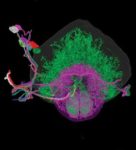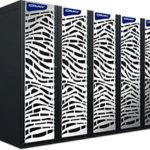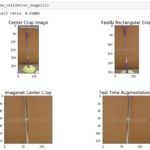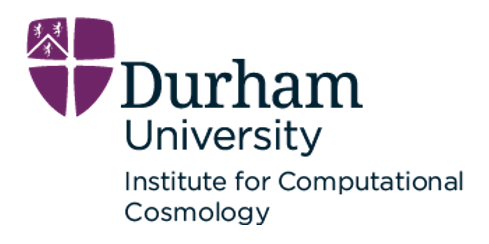In this special guest feature, Dave Frattura from Dell Technologies writes that the company is helping customers simplify and drive data science and AI initiatives that can deliver valuable insights, automation and intelligence to fuel innovation across their IT landscape — from edge locations to core data center and public clouds. “Dell has developed new solutions to help data scientists and developers get their AI applications and projects up and running without delay.”
Visualizing an Entire Brain at Nanoscale Resolution
In this video from SC19, Berkeley researchers visualizes an entire brain at nanoscale resolution. The work was published in the journal, Science. “At the core of the work is the combination of expansion microscopy and lattice light-sheet microscopy (ExLLSM) to capture large super-resolution image volumes of neural circuits using high-speed, nano-scale molecular microscopy.”
Dell EMC to Deploy World’s Largest Industrial Supercomputer at Eni
Today Eni announced plans to deploy the world’s largest industrial supercomputer at its Green Data Center in Italy. Called “HPC5,” the new system from Dell EMC will triple the computing power of their existing HPC4 system. The combined machines will have a total peak power of 70 Petaflops. “HPC5 will be made up of 1,820 Dell EMC PowerEdge C4140 servers, each with two Intel Gold 6252 24-core processors and four NVIDIA V100 GPU accelerators. The servers will be connected through an InfiniBand Mellanox HDR ultra-high-performance network.”
Cray CS-Storm Supercomputer coming to HLRS in Germany
Today Cray announced that the High-Performance Computing Center of the University of Stuttgart (HLRS) in Germany has selected a new Cray CS-Storm GPU-accelerated supercomputer to advance its computing infrastructure in response to user demand for processing-intensive applications like machine learning and deep learning. “The Cray CS-Storm combined with the unique Cray-CS AI and Analytics suite will allow HLRS to better tackle converged AI and simulation workloads in the exascale era.”
Harvard Names New Lenovo HPC Cluster after Astronomer Annie Jump Cannon
Harvard has deployed a liquid-cooled supercomputer from Lenovo at it’s FASRC computing center. The system, named “Cannon” in honor of astronomer Annie Jump Cannon, is a large-scale HPC cluster supporting scientific modeling and simulation for thousands of Harvard researchers. “This new cluster will have 30,000 cores of Intel 8268 “Cascade Lake” processors. Each node will have 48 cores and 192 GB of RAM.”
Fujitsu to Deploy Gadi Supercomputer at NCI in Australia
Today Fujitsu announced a contract to upgrade the Australia’s fastest supercomputer at NCI. Called “Gadi,” the new supercomputer will replace the NCI’s current supercomputer, Raijin, which was also provided by Fujitsu back in 2012. “The upgrade of this critical infrastructure will see Australia continue to play a leading role in addressing some of our greatest global challenges. This new machine will keep Australian research and the 5,000 researchers who use it at the cutting-edge.”
ISC19 Student Cluster Competition: LINs Packed & Conjugates Gradient-ed
In this special guest feature, Dan Olds from OrionX shares first-hand coverage of the Student Cluster Competition at the recent ISC 2019 conference. “The benchmark results from the recently concluded ISC19 Student Cluster Competition have been compiled, sliced, diced, and analyzed senseless. As you cluster comp fanatics know, this year the student teams are required to run LINPACK, HPCG, and HPCC as part of the ISC19 competition.”
Cray to build Big Red 200 Supercomputer for Indiana University
Today Cray announced that Indiana University has selected a Cray Shasta supercomputing system to advance the use of AI across diverse research fields at the university. ” We’ve entered an age where AI is poised to transform the future of many industries–from healthcare to cybersecurity–and we’re confident the latest technology from Cray will meet our needs for a computing infrastructure that will build on the promise of AI in Indiana.”
Fast.AI Achieves Record ImageNet performance with NVIDIA V100 Tensor Core GPUs
The NVIDIA blog points us to this story on how Fast.ai just completed a new deep learning benchmark milestone. Using NVIDIA V100 GPUs on AWS with PyTorch, the company now has the ability to train ImageNet to 93% accuracy in just 18 minutes. “DIU and fast.ai will be releasing software to allow anyone to easily train and monitor their own distributed models on AWS, using the best practices developed in this project,” said Jeremy Howard, a founding researcher at fast.ai. “We entered this competition because we wanted to show that you don’t have to have huge resources to be at the cutting edge of AI research, and we were quite successful in doing so.”
Radio Free HPC runs down the latest TOP500 Fastest Supercomputers
In this podcast, the Radio Free HPC team reviews the latest TOP500 list of the world’s fastest supercomputers. “The TOP500 celebrates its 25th anniversary with a major shakeup at the top of the list. For the first time since November 2012, the US claims the most powerful supercomputer in the world, leading a significant turnover in which four of the five top systems were either new or substantially upgraded.”













